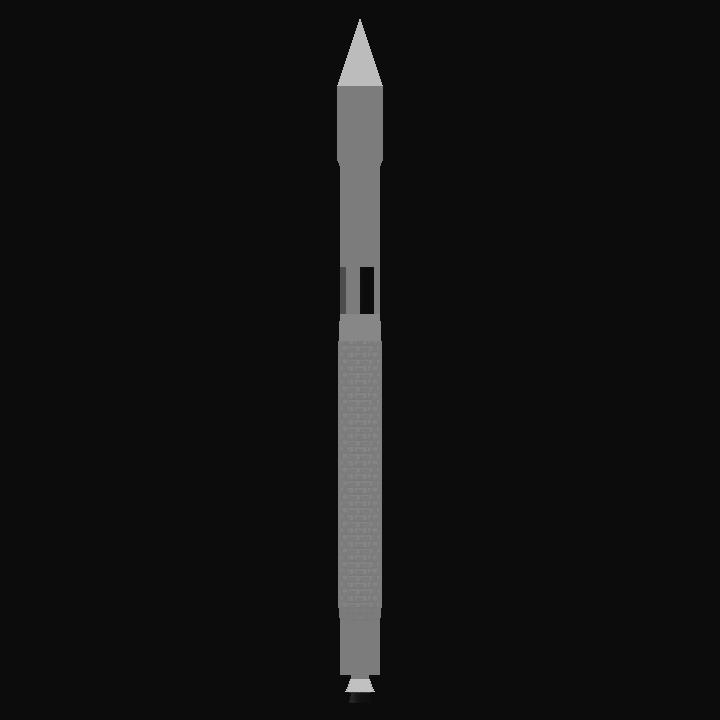ATLAS V 400 SERIES

GET TO SPACE SAFELY AND ON TIME
Starting at $109 millionMore than 15 years of 100% mission success founded on a heritage of more than 600 Atlas program launchesDelivers the most sensitive and critical missions – including planetary exploration missions, classified defense systems and key commercial assetsLaunching astronauts to the International Space Station aboard Boeing’s Starliner capsule
CONFIGURATIONS
Modular design to accommodate a full range of mission requirements
Atlas V uses a standard common core booster, up to five solid rocket boosters (SRBs), a Centaur upper stage in a single- or dual-engine configuration, and one of several sizes of payload fairings.
Centaur is the world's highest-performing upper stage. The pressure-stabilized tanks combined with the lightweight Aerojet Rocketdyne RL10C-1 engine provides industry best thrust-to-weight ratio. The stage has demonstrated long-coast relight capability that enables it to service any orbital need.
PAYLOAD FAIRINGS
The payload fairing (PLF) provides a controlled, safe environment for spacecraft during ascent. All ULA PLFs are configured for off-pad payload encapsulation to enhance payload safety and security and minimize on-pad time.
The Atlas V payload fairings are configurable to fit a variety of spacecraft heights, both 4-m and 5-m diameter variants are available in three lengths. The 4-m PLF is a metallic design, configured by adding additional cylindrical plugs to achieve the desired length. The 5-m PLF is a carbon composite bi-sector design manufactured by ULA partner RUAG Space.

PROPULSION
Main Engine
Delivering more than 860,000 pounds of thrust at liftoff and an impressive range of continuous throttling capability, the RD-180 main engine is a powerful combination of innovation and performance. Designed and manufactured by NPO Energomash, the liquid oxygen/liquid kerosene, two-thrust-chamber RD-180 engine is a complete propulsion unit equipped with hydraulics for control valve actuation and thrust vector gimbaling, pneumatics for valve actuation and system purging, and a thrust frame to distribute loads.
Nominal Thrust (sea level): 860,300 lbs
Specific Impulse (sea level): 311 seconds
Length: 140 in Weight: 12,081 lbs
Fuel/Oxidizer: Liquid Oxygen/Liquid Kerosene
Solid Rocket Boosters
When missions demand additional thrust at liftoff, Atlas integrates up to three Aerojet Rocketdyne solid rocket boosters (SRBs) on the Atlas V 400 series launch vehicle and up to five SRBs on the Atlas V 500 series vehicles.
Peak Vacuum Thrust: 380,000 lbf
Specific Impulse: 279.3 seconds
Length: 787 in
Maximum Diameter: 62.2 in
Weight: 102,950 lbs
Nominal Burn Time: 88.3 seconds
Upper Stage
Both the Atlas V and the Delta IV rely on the RL10 propulsion system to power their second stages. Logging an impressive record of nearly 400 successful flights and nearly 700 firings in space, RL10 engines, manufactured by Aerojet Rocketdyne, harness the power of high-energy liquid hydrogen. The RL10 boasts a precision control system and restart capability to accurately place payloads into orbit.
The Atlas V Centaur upper stage is powered by the RL10C and can be configured with either one or two engines.
Nominal Thrust: 22,900 lbs
Specific Impulse: 450.5 seconds
Fuel/Oxidizer: Liquid Hydrogen/Liquid Oxygen
Diameter: 46 in
Weight: 367 lbs
GENERAL INFO
- Created On: Android
- Game Version: 0.9.306.0
- Price: $7,027k
- Number of Parts: 33
- Dimensions: 51 m x 3 m x 3 m
PERFORMANCE
- Total Delta V: 5.4km/s
- Total Thrust: 5.3MN
- Engines: 2
- Wet Mass: 1.08E+5kg
- Dry Mass: 16,062kg
STAGES
| Stage | Engines | Delta V | Thrust | Burn | Mass |
|---|---|---|---|---|---|
| 1 | 1 | 1.7km/s | 4.5MN | 27s | 1.08E+5kg |
| 4 | 1 | 3.8km/s | 843kN | 87s | 37,936kg |
No Comments
4 Upvotes
Log in in to upvote this post.




